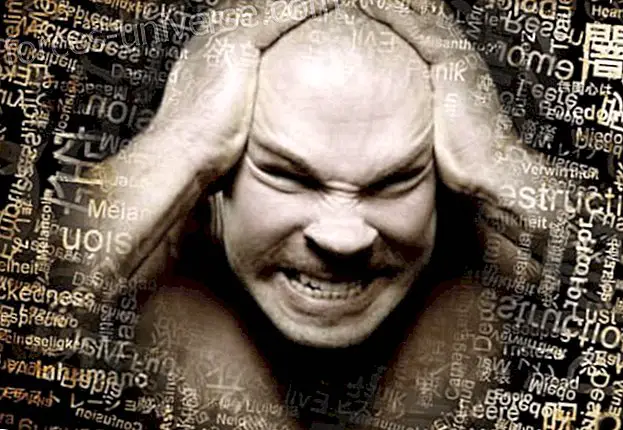
The man in his constant need for progress and technological advancement, with the passing of time has been slowly disregarding the symbolic and mythical way of thinking, considering it as mere fantasy of primitive peoples as well as counterproductive for their evolution.
The cultures of the ancient peoples (Babylonians, Egyptians, Mayans, among others) developed a complex system of abstract / sacred thought being the Qabalah, Alchemy, Astrology and Tarot manifestations that came to us, but are still considered by the profane pure superstitions. This universal knowledge is expressed fundamentally through symbols that the initiates are obliged to master since the mythical images grant the possibility of connection with the sacred path and the memory of nature, which is totally inaccessible through logical thinking.
Within the history of Psychology, it was CG Jung who recovered this hermetic knowledge and translated them into psychological language, managed to introduce them into modern western culture, revaluing them. His mission was aimed at understanding the manifestations of the unconscious: dreams, fantasies, visions, hallucinations, which appearing in a seemingly confusing, disjointed and chaotic way should contain a meaning and a meaning.
This is why two basic attitudes could be taken before the images provided by the dark world: or let them pass by - which means that in the long run they will continue to be presented with greater force and even in the form of a physical symptom - or assume the commitment to work with the material they present and try to give it a personal meaning and meaning to integrate it into consciousness. It was Jung's choice, who, from his own archetypal experience, wove his theory, amplifying it over the years as he toured and lived his personal myth. Without knowing it, Jung was guided by invisible forces to fulfill a shamanic role.
In the animist tribes, the priest named shaman was the one who possessed the key to penetrate the spirit world and thus be a mediator between the will of the Gods and men. His role as historian, healer, wise advisor and spiritual leader was not given to chance. The Shaman candidate was identified by certain signs that he was showing throughout his childhood and puberty, which consisted of particular physical and psychic symptoms: isolation, seizures, terrifying visions, unknown physical illnesses, incoherent language, etc. By 15 years the candidate was isolated in a grotto and subjected to a rigorous initiation, which consisted of subjecting him to tests involving the confrontation with the world of the elemental spirits of nature. In this bloody struggle, if the candidate was victorious, the elementals served him as allies and intermediaries with other spirits, endowing him with healing powers, the gift to interpret dreams, the ability to travel in time and space, the magic to adopt diverse animal forms and knowledge. Curator of herbs. If he failed the test, he would be defeated by these same forces in the form of death or illness, madness and constant suffering. It should be emphasized that this same result was the consequence of rejecting the initiatory experience out of fear.
In his autobiography Memories, Dreams and Thoughts, Jung describes this same experience through which he comes into contact with the contents of his dreams and visions, the darkness and richness of his psyche and the confrontation with his doubts and fears, due to the images that the unconscious provided him during the years 1912-1920. They were for Jung "the raw material of a job that lasted a lifetime." He needed to find the answer to the concerns that theories and dogmas had not been able to offer him.
After the breakup with Freud, for Jung a period of confusion began, he realized that he did not have a theoretical frame of reference on which to base himself, so he assumed an “experiential” attitude. He worked with his patients without following pre-established rules and tried to help them understand the dream images they provided through intuition and his own personal introspection work. He felt that he could get help from mythology to access the world of the unconscious, however it did not offer him greater answers since he had not yet managed to decipher his own myth.
In a dream of 1912 Jung comes into contact with images related to the dead and with the alchemical legend of Hermes Trimegisto, tries to give meaning to the dream, but gives up thinking that the best It is to continue living, trying to pay attention to the fantasies and images that will arise. Another dream in whose content appeared graves of the dead who came back to life as Jung watched them, suggested the existence of unconscious archaic remains that come alive through the psyche; This content later served him to formulate his theory about archetypes.
All this symbolic material contributed by the dreams Jung could not understand and overcome the state of disorientation, felt a great internal oppression and came to think that he suffered Some kind of psychic disorder. Through a review of the concrete events of his life he tried to find some explanation for his confusion, but being this way also fruitless, he decided to surrender completely to the world of the unconscious.
The first thing he remembered was an episode of his childhood when he used to build houses and castles with stone and mud. This memory served as a connector with its most genuine and creative part, so I decided to relive that moment by resuming this activity of construction n . He began to create a city in which he placed a church, but he noticed that he was reluctant to place the altar. One day, walking near the lake, he found a small red pyramidal stone, and when he saw it he understood that it should be the altar. The moment he placed it in place, the memory of the underground phallus he had dreamed of as a child returned to his mind, and he felt a great relief. It seemed that the unconscious was leading him to the understanding of those things that in the past had not been answered.
As he carried out this construction activity, he felt that his thoughts were clearing and that he was on the right path to discover his own myth. From this moment Jung affirms that throughout his life, in the moments of darkness, he would resort to creativity as a gateway to the thoughts and ideas he wanted to develop.
In the fall of 1913, the feeling of internal oppression seemed to come alive externally through concrete facts. He was presented with repetitive visions that prophesied a great collective-type catastrophe where contents of death and blood events predominated, while an internal voice assured him that everything he perceived was true. Jung could not explain these visions and came to think that he was psychotic. The visions lasted almost a year, with intervals of months between them; They all allude to the same content. In August 1914 the first world war began. At that moment, Jung understood that there was a connection between his personal and collective experience, so he felt the need to explore his own psyche in depth and began to write down all the fantasies. Those that came to him in his moments of play and construction, when he gave free rein to his creativity.
A period begins in which he is invaded by all kinds of fantasies and images, he said he felt helpless before this difficult and incomprehensible world but at the same time he sensed the convinced conviction of having to obey a "higher will." He resorted to yoga exercises to master his emotions and find calm so as to plunge back into his confrontation with the unconscious. He translated his emotions into images, in an attempt to understand them and not be possessed by them. This experience served as a tool for the therapeutic process, that is: not to stay in the emotion but to reach the underlying images.
Jung conceived this clash with the unconscious as a scientific experiment on himself, where the greatest difficulties lay in the domain of his negative feelings as well as in the misunderstanding of the material that arose from his psyche, which produced resistance, opposition and fear. He was afraid of losing control and being possessed by the contents of the unconscious, but at the same time he knew that he could not pretend that his patients did what he could not do with himself. Although he considered it a painful experience to submit to this, he felt that destiny demanded it. He obtained the strength to face this fight in the idea that it was not only for his good, but for that of his patients. On the other hand, family and professional activity were essential ingredients to help Jung throughout this process. Both reminded him that he was a common man. The real and everyday world complemented his strange inner world and represented the guarantee of his normality. Jung states that this made the difference between him and Nietzsche, who had lost contact with reality and lived submerged in his chaotic inner world.
Then two important images emerged. The first alluded to transformation, death and rebirth, while the second suggested that he should stop identifying with the hero, annihilate his conscious attitude and turn away the will. That is, abandoning the demands of the Ego in order to access transpersonal consciousness.
In another image I found two biblical figures: Elijah and Salome - accompanied by a black snake - who claimed that they belonged to eternity. Jung interpreted these figures as the personification of Logos and Eros. However, he felt that this was an overly intellectual explanation, so he preferred to think that they were the manifestation of deep processes of the unconscious.
Later, another figure named Jung "Philemon" would appear in his dream. He was an old man with horns and wings of Kingfisher, who carried 4 keys with him. With him, Jung talked and Philemon told him things that were unknown to him, taught him "psychic objectivity, " which helped Jung distinguish between himself and the objects of his thoughts. For Jung, this image represented a superior intelligence, a spiritual guru who communicated enlightened thoughts. Later the image of "Ka" emerged, representing a kind of demon of the earth, a spirit of nature, which to some extent complemented the figure of Philemon.
While Jung wrote down his fantasies, he wondered what he was really doing, since it certainly wasn't about science. A female voice that came from within - which Jung associated with the voice of one of his patients - replied that "it was art." He was opposed to thinking that it was art, however he let this "inner woman" flow, although he felt scared at this unknown presence. He called it "anima", referring to the archetypal female internal figure of man, while the "animus" represented the male figure. He described the negative aspects of "anima as seduction, cunning and ambiguity but with the quality of being the mediator between consciousness and the unconscious. Jung says that for years he used his "anima" to access the contents of his unconscious, while in his old age he no longer resorted to it because he managed to capture these contents directly.
Through his "anima", Jung was able to establish a dialogue with the unconscious, access its contents and reduce the autonomy he exercised over his person. The power the images had became less violent. There was no longer an assault of the unconscious towards consciousness, but a dynamic creative exchange was established.
These fantasies Jung wrote them in the "Black Book" and later in the "Red Book", in which are his mandalas and the illustrations made by himself. However, he felt that he could not put into words what he experienced, so he preferred to devote himself in depth to the understanding of the images in order to draw concrete conclusions from the messages that the unconscious suggested. This was the task of his life, since he felt a moral responsibility. He affirmed that man cannot limit himself to seeing the images emerge and be surprised at them, he must understand them because otherwise he is condemned to live incompletely. "Human responsibility is great before the images of the unconscious."
In 1916 Jung experiences a new vision: his soul flew out of it, which he interpreted as the possibility of connecting with the land of the dead, of the ancestors or of the collective unconscious. Shortly after this vision he perceived the presence of spirits that inhabited the house - his children also perceived them - until one afternoon the spirits rang the bell shouting "We returned from Jerusalem, where we did not find what we were looking for." Jung then writes for three nights the "Septem Sermons ad Mortuos" and later the spirits disappeared. He states that this experience should be taken for what it was: the external manifestation of an emotional state favorable to the appearance of parapsychological phenomena. The evasion of his soul had connected him with the spirits. These writings, which are dialogues with the dead, Jung considers them a preparation of what he should communicate to the world about the unconscious and its contents.
In this period, Jung finds himself at a crossroads: either following what his internal world dictated to him, or continuing his academic profession. He considered that he could not continue teaching students when there were only doubts inside. He then decided to leave his position as a teacher at the university because "I felt that something great was happening to me, " and he needed to discover or understand it before he could share it publicly. As a consequence of this decision, he begins a period of loneliness since he cannot share his thoughts with others: they would not have understood. Even he could not understand the contradictions between his inner and outer world. Only when he could prove that the psychic contents were real and collective, then, at that moment could he communicate his new vision about the psyche. The risk was great, since if they did not understand it, it would be totally isolated.
Between the years of 1918-19 he began to emerge from the darkness in which he was, and this he attributed to two factors: on the one hand, the female voice distanced itself that wanted to convince him that his fantasies were of artistic value and on the other, began to understand the mandalas. Every day he drew small circular figures through which he observed his psychic transformations. He considered them the entire "Self." As I drew them the purpose of this activity was raised, but I knew that I could not understand the meaning a priori, but through the process itself. He realized that the development of the psyche was not a linear process but a circular one, that "everything tends towards the center." This certainty allowed him to find inner peace and stability. It was as if he was finding his own center.
In 1927 he had a dream that confirmed this idea and represented it through a mandala entitled "Window to Eternity." In the dream Jung was in a city in a circular shape, in a cloudy and dark environment, in the company of some Swiss. In spite of this opaque environment, in the center of the city there was a square with a small island in the center where there was a magnolia tree that had its own light. Only Jung had noticed this presence of luminosity, and then he understood that that was the goal. Regarding this dream, Jung affirms "The center is the goal and everything is directed towards the center. Thanks to this dream, I understood that "Self" is the principle and archetype of orientation and meaning ... recognizing it to me meant having the initial intuition of my own myth. "
Without this image, I would have lost my orientation and abandoned the path I had begun. After such darkness, this image should be conceived as an "act of grace, " as the manifestation of the numinous.
The following year he drew another mandala that had a golden castle in the center, the shape and colors suggested a Chinese style. Synchronously R. Wilhelm sent him a letter with a manuscript of a Taoist alchemy treatise entitled "The mystery of the golden flower." This coincidence helped Jung out of his loneliness, as it gave him the hope that there were people with whom he could have affinity and share his ideas.
For Jung these were the most important years of his life: without severing ties with his reality as a common man and despite loneliness, he took the risk of immersing himself in his own darkness trying to find meaning and purpose for everything he experienced. . He assumed the responsibility of analyzing and understanding the material that the unconscious provided him and went in search of his own myth.
S. .L. . ANANDA II & F. .L. . ARIELL CHRIS
Seen at: El-Amarna






